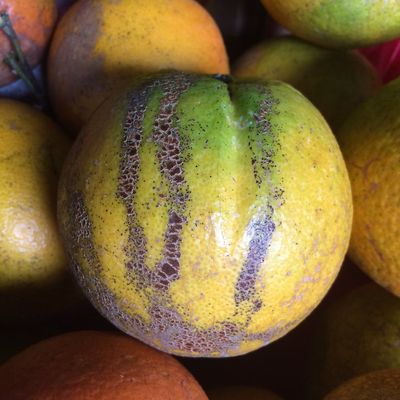What Causes Citrus Melanose?
Citrus melanoses disease is caused by a fungus called Phomopsis citri. The citrus melanose fungus can infect any type of citrus tree, but grapefruit and lemon are most susceptible to it. The fungus grows on dead twigs on trees, and it then spreads to other areas of the tree and other trees by water dispersal.
Citrus Melanose Symptoms
Symptoms of citrus melanose can be seen most clearly on leaves and fruit. The leaves develop small red-to-brown spots. These are often ringed in yellow, but this coloring disappears as the disease develops. The surface of the leaf becomes rough in texture. The citrus fruit infected by the melanose fungus will show brown spots or pustules. These grow together and start to crack, a phenomenon known as mudcake. The spots may also travel down the fruit with dripping water, making what is referred to as a tear stain.
Preventing Citrus Melanose
If you grow citrus in your garden, you can take steps to reduce the chances that the infection will develop or spread. Because the fungus grows on dead wood, it is important to trim out dead branches and twigs and remove them from the ground immediately. Disinfect pruning shears before using them on healthy branches. The disease spreads by water, so avoiding overhead watering is also helpful.
How to Treat Citrus Melanose
Citrus melanose control, once it has developed in a tree or orchard, involves the use of fungicides. The most common type used is copper fungicide, but you can get recommendations and instructions for use from your nursery or local agricultural extension. Fungicide treatment of your citrus trees is not always necessary. The disease does not make your fruit inedible, but if the infection is severe it can harm the tree by damaging twigs and leaves. Fungicide can be used as a last resort if prevention and control methods don’t keep the disease under control.
